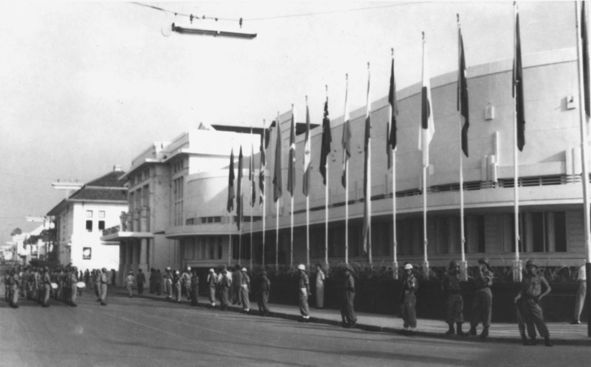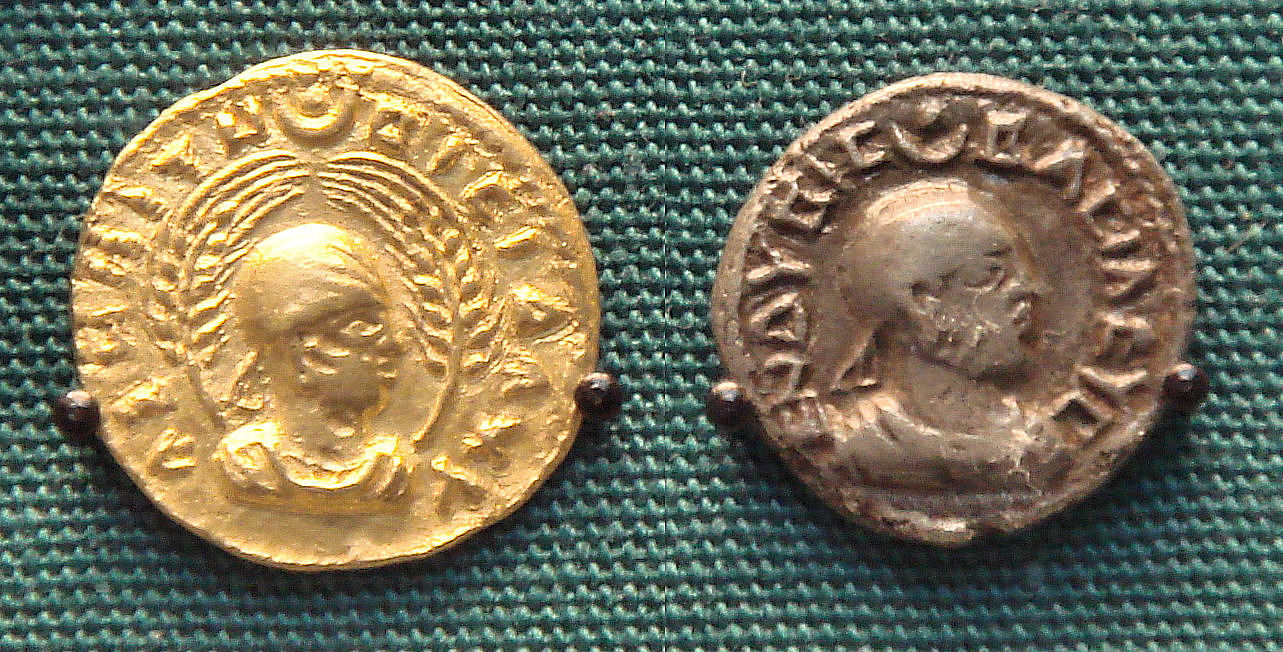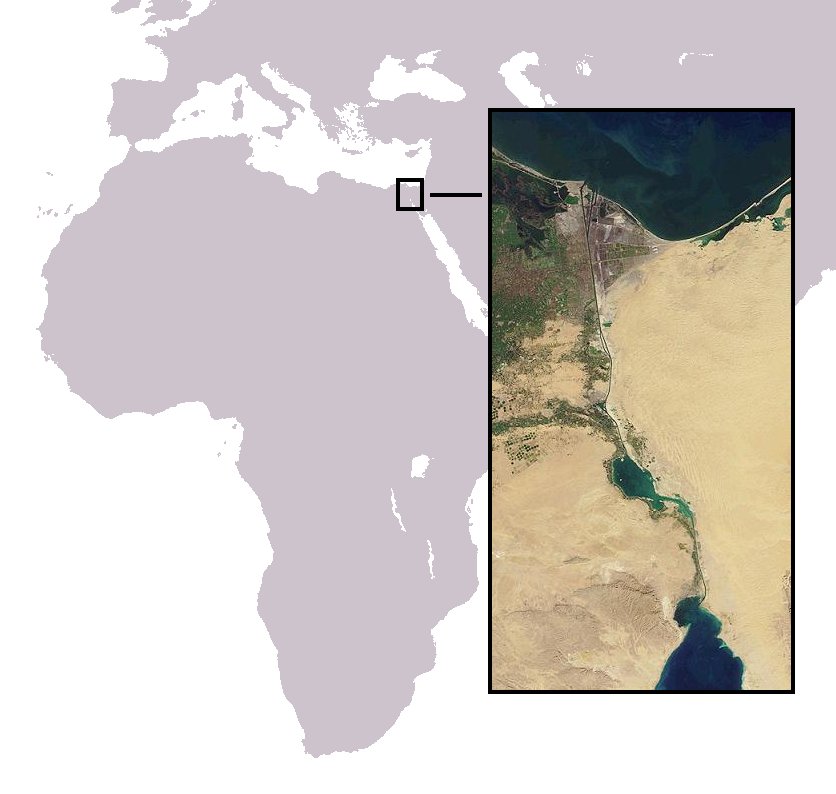|
Afro-Asia
Afro-Asia is a term describing the combination of Africa and Asia. The term is often used to describe the solidarity between African and Asian nations when they were Decolonization#After 1945, acting against European colonialism and later also remaining Non-Aligned Movement, nonaligned during the Cold War. Together with Europe, Africa and Asia form the landmass of Afro-Eurasia. History Ancient era Africa and Asia had trade links in pre-colonial times, particularly through East Africa trading with Asian regions as far east as China (see also Ming treasure voyages). Modern era The 1869 completion of the Suez Canal gave European powers greater access to Asia and the east coast of Africa, as they could now sail directly through the Indo-Mediterranean rather than Cape Route, around South Africa. This led into the New Imperialism that dominated much of Afro-Asia at the turn of the 20th century. Modern Afro-Asian solidarity began in reaction to Western colonialism and the pos ... [...More Info...] [...Related Items...] OR: [Wikipedia] [Google] [Baidu] |
Afro-Asians
Afro-Asians, African Asians, Blasians, or simply Black Asians are people of mixed Asian and African ancestry. Historically, Afro-Asian populations have been marginalised as a result of human migration and social conflict. Africa Democratic Republic of the Congo Katanga Afro-Japanese During the 1970s, an increased demand for copper and cobalt attracted Japanese investments in the mineral-rich southeastern region of Katanga Province. Over a 10-year period, more than 1,000 Japanese miners relocated to the region, confined to a strictly male-only camp. Arriving without family or spouses, the men often sought social interaction outside the confines of their camps. In search of intimacy with the opposite sex, resulting in cohabitation, the men openly engaged in interracial dating and relationships, a practice embraced by the local society. As a result, a number of Japanese miners fathered children with native Congolese women. However, most of the mixed race infants resulting fr ... [...More Info...] [...Related Items...] OR: [Wikipedia] [Google] [Baidu] |
Bandung Conference
The first large-scale Asian–African or Afro–Asian Conference (), also known as the Bandung Conference, was a meeting of Asian and African states, most of which were newly independent, which took place on 18–24 April 1955 in Bandung, West Java, Indonesia. The twenty-nine countries that participated represented a total population of 1.5 billion people, 54% of the world's population. The conference was organized by Indonesia, Burma (Myanmar), India, Ceylon (Sri Lanka), and Pakistan and was coordinated by Ruslan Abdulgani, secretary general of the Ministry of Foreign Affairs of the Republic of Indonesia. The conference's stated aims were to promote Afro-Asian economic and cultural cooperation and to oppose colonialism or neocolonialism by any nation. The conference was a step towards the eventual creation of the Non-Aligned Movement (NAM) yet the two initiatives ran in parallel during the 1960s, even coming in confrontation with one another prior to the 2nd Cairo NAM C ... [...More Info...] [...Related Items...] OR: [Wikipedia] [Google] [Baidu] |
Africa
Africa is the world's second-largest and second-most populous continent after Asia. At about 30.3 million km2 (11.7 million square miles) including adjacent islands, it covers 20% of Earth's land area and 6% of its total surface area.Sayre, April Pulley (1999), ''Africa'', Twenty-First Century Books. . With nearly billion people as of , it accounts for about of the world's human population. Demographics of Africa, Africa's population is the youngest among all the continents; the median age in 2012 was 19.7, when the worldwide median age was 30.4. Based on 2024 projections, Africa's population will exceed 3.8 billion people by 2100. Africa is the least wealthy inhabited continent per capita and second-least wealthy by total wealth, ahead of Oceania. Scholars have attributed this to different factors including Geography of Africa, geography, Climate of Africa, climate, corruption, Scramble for Africa, colonialism, the Cold War, and neocolonialism. Despite this lo ... [...More Info...] [...Related Items...] OR: [Wikipedia] [Google] [Baidu] |
Coolie
Coolie (also spelled koelie, kouli, khuli, khulie, kuli, cooli, cooly, or quli) is a pejorative term used for low-wage labourers, typically those of Indian people, Indian or Chinese descent. The word ''coolie'' was first used in the 16th century by European traders across Asia. In the 18th century, the term more commonly referred to migrant Indian indenture system, Indian indentured labourers. In the 19th century, during the Colonial India, British colonial era, the term was adopted for the transportation and employment of Asian labourers via employment contracts on Sugar plantations in the Caribbean, sugar plantations formerly worked by enslaved Africans. The word has had a variety of negative implications. In modern-day English, it is usually regarded as offensive. In the 21st century, ''coolie'' is generally considered a racial slur for Asians in Oceania, Africa, Southeast Asia, and the Americas (particularly in the Caribbean). The word originated in the 17th-century India ... [...More Info...] [...Related Items...] OR: [Wikipedia] [Google] [Baidu] |
South–South Cooperation
South-South cooperation (SSC) is a term historically used by policymakers and academics to describe the exchange of resources, technology, and knowledge between developing countries. Definition The term South or Global South is defined as regions in the world that have similar political, social and economic histories that are rooted in disparities that occurred during the colonial or imperialist era. The South is understood as an ideological expression of the concerns facing developing regions, which are increasingly diverse in economic and political experience. The Global South is making increasingly significant contributions to global development. The economic and geopolitical relevance of many countries has grown. In the past, south-south cooperation focused on sharing knowledge and building capacities, but the countries of the Global South and new financial institutions have recently also become increasingly active in development finance. This collaboration refers to the l ... [...More Info...] [...Related Items...] OR: [Wikipedia] [Google] [Baidu] |
New Imperialism
In History, historical contexts, New Imperialism characterizes a period of Colonialism, colonial expansion by European powers, the American imperialism, United States, and Empire of Japan, Japan during the late 19th and early 20th centuries. The period featured an unprecedented pursuit of overseas territorial acquisitions. At the time, State (polity), states focused on building their empires with new technological advances and developments, Right of conquest, expanding their territory through conquest, and exploiting the resources of the subjugated countries. During the era of New Imperialism, the European powers (and Japan) individually conquered almost all of Scramble for Africa, Africa and parts of Western imperialism in Asia, Asia. The new wave of imperialism reflected ongoing International relations (1814–1919), rivalries among the great powers, the economic desire for new resources and markets, and a "civilizing mission" ethos. Many of the colonies established during t ... [...More Info...] [...Related Items...] OR: [Wikipedia] [Google] [Baidu] |
Sino-African Relations
Sino–African relations, also referred to as Africa–China relations or Afro–Chinese relations, are the historical, political, economic, military, social, and cultural connections between China and the African continent. Little is known about ancient relations between China and Africa, though there is some evidence of early trade connections. Highlights of medieval contacts include the 14th-century journey of Morocco, Moroccan scholar Ibn Battuta, the 14th-century visit of Somali people, Somali scholar and explorer Sa'id of Mogadishu and the 15th-century Ming dynasty voyages of Chinese people, Chinese admiral Zheng He. Modern political and economic relations between mainland China and the African continent commenced in the era of Mao Zedong, following the victory of the Chinese Communist Party (CCP) in the Chinese Civil War. At the turn of the 21st century, the modern state of the People's Republic of China (PRC) built increasingly strong economic ties with List of African ... [...More Info...] [...Related Items...] OR: [Wikipedia] [Google] [Baidu] |
Africa–India Relations
Africa–India relations (also referred to as Indo-African relations or Afro-Indian relations) are the historical, political, economic, and cultural connections between India and the African continent. Historical relations concerned mainly India and East Africa. However, in modern days—and with the expansion of diplomatic and commercial representations— India has now developed ties with most of the African nations. Trade between India & Africa stood at US$62.66 billion (2017–18) making India the fourth largest trading partner of Africa. Historical background Africa and India are connected by the Indian Ocean. The geographical proximity between the Horn of Africa and the Indian subcontinent has played an important role in the development of the relationship since ancient times. Ancient trade relations Indo-African relations date back to the Bronze Age period of the Indus Valley civilization, Pearl millet first domesticated in Africa have been discovered from the site o ... [...More Info...] [...Related Items...] OR: [Wikipedia] [Google] [Baidu] |
Asian Diaspora
The Asian diaspora is the diasporic group of Asian people who live outside of the continent. There are several prominent groups within the Asian diaspora. Asian diasporas have been noted for having an increasingly transnational relationship with their ancestral homelands, especially culturally through the use of digital media. History Asians have a long history of migrating internally within Asia. Overland trading routes such as the Silk Road, and maritime routes through the Indo-Pacific enabled ancient exchanges. Since the late 19th century, Asian migration has greatly increased because of the impacts of colonialism and globalisation, which enabled new types of migration; for example, European empires' global reach and consolidation paved the way for the Indian indenture system. Increasing border enforcement by modern nation-states has stymied traditional migration flows, however. Central Asian diaspora The Central Asian diaspora of the modern era is shaped to a signi ... [...More Info...] [...Related Items...] OR: [Wikipedia] [Google] [Baidu] |
Yellow Peril
The Yellow Peril (also the Yellow Terror, the Yellow Menace, and the Yellow Specter) is a Racism, racist color terminology for race, color metaphor that depicts the peoples of East Asia, East and Southeast Asia as an existential danger to the Western world. The concept of the Yellow Peril derives from a "core imagery of apes, lesser men, primitives, children, madmen, and beings who possessed special powers", which developed during the 19th century as Western imperialist expansion adduced East Asians as the Yellow Peril. In the late 19th century, the Russian sociologist Jacques Novicow coined the term in the essay "Le Péril Jaune" ("The Yellow Peril", 1897), which Kaiser Wilhelm II (r. 1888–1918) used to encourage the European empires to invade, conquer, and colonize China. To that end, using the Yellow Peril ideology, the Kaiser portrayed the Japanese and the Asian victory against the Russians in the Russo-Japanese War (1904–1905) as an Asian racial threat to white Western ... [...More Info...] [...Related Items...] OR: [Wikipedia] [Google] [Baidu] |
Indo-Mediterranean
The Indo-Mediterranean is the region comprising the Mediterranean world, the Indian Ocean world, and their connecting regions in the vicinity of the Suez Canal. History Prehistory From around 3000 BCE to 1000 CE, connectivity within Afro-Eurasia was centered upon the Indo-Mediterranean region; William Dalrymple has argued that connectivity in Eurasia centered on this region along with the West Pacific, which put together he refers to as a "The Golden Road: How Ancient India Transformed the World, Golden Road", until 1200 CE and the rise of the Silk Road. Gamal Abdel Nasser, the second president of Egypt (which is at the heart of the Indo-Mediterranean) once described the country as "the crossroads of the world, the thoroughfare of its traders and passageway of its armies." Caravan traffic through the extended arid zone at the heart of much of Afro-Eurasia played a significant role in allowing for Indian Ocean and Mediterranean ports to thrive and trade with each other. Howev ... [...More Info...] [...Related Items...] OR: [Wikipedia] [Google] [Baidu] |
Asia
Asia ( , ) is the largest continent in the world by both land area and population. It covers an area of more than 44 million square kilometres, about 30% of Earth's total land area and 8% of Earth's total surface area. The continent, which has long been home to the majority of the human population, was the site of many of the first civilisations. Its 4.7 billion people constitute roughly 60% of the world's population. Asia shares the landmass of Eurasia with Europe, and of Afro-Eurasia with both Europe and Africa. In general terms, it is bounded on the east by the Pacific Ocean, on the south by the Indian Ocean, and on the north by the Arctic Ocean. The border of Asia with Europe is a social constructionism, historical and cultural construct, as there is no clear physical and geographical separation between them. A commonly accepted division places Asia to the east of the Suez Canal separating it from Africa; and to the east of the Turkish straits, the Ural Mountains an ... [...More Info...] [...Related Items...] OR: [Wikipedia] [Google] [Baidu] |









